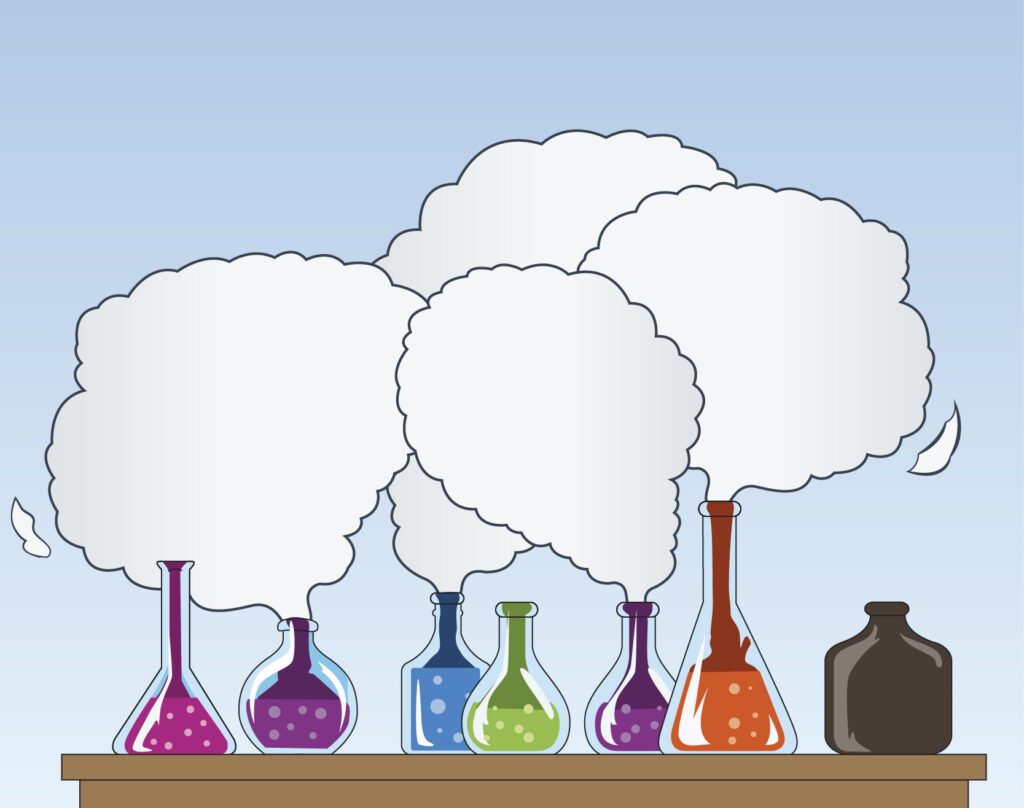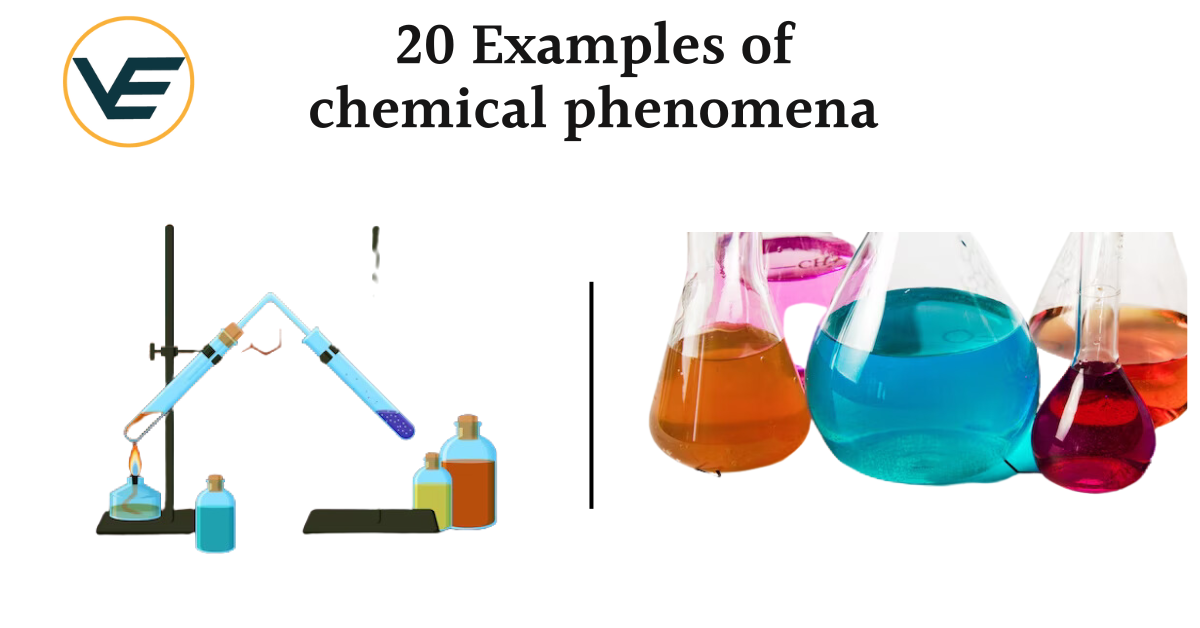Chemical phenomena include a wide range of reactions and processes that occur in the world of chemistry, influencing the behavior and transformation of matter. Chemical phenomena are observable events that involve the transformation of substances.
Each example will provide a clear explanation of the chemical process involved, its significance, and its impact on our daily lives. Whether you’re a student seeking to understand chemistry better, a teacher looking for real-world examples to share with your students, or simply a curious mind eager to understand the world better, this blog is for you.
Definition of Chemical Phenomena
Chemical phenomena refer to processes where substances undergo changes at the molecular level, resulting in the formation of new substances. These transformations often involve the breaking and forming of chemical bonds.
Chemical Phenomena Examples
In this blog, we will delve into 20 intriguing examples of chemical phenomena that occur in our everyday lives. Here are 20 examples of chemical phenomena:

- Combustion: The rapid chemical reaction between a substance and oxygen, producing heat and light, such as in burning wood or fuel.
- Oxidation: The reaction of a substance with oxygen, resulting in the loss of electrons and often leading to the formation of rust on metals.
- Photosynthesis: The process by which plants convert carbon dioxide and water into glucose and oxygen using sunlight and chlorophyll.
- Acid-Base Reactions: The chemical reactions between acids and bases, result in the formation of water and a salt.
- Neutralization: The reaction between an acid and a base, leading to the formation of water and a salt, and neutralizing the acidic or basic properties.
- Fermentation: The anaerobic breakdown of sugars by microorganisms, producing alcohol, carbon dioxide, and energy.
- Electrolysis: The decomposition of a compound using an electric current, often used to extract metals from their ores.
- Corrosion: The gradual deterioration of materials, especially metals, due to chemical reactions with their environment.
- Polymerization: The chemical process of joining monomers to form long chains, creating polymers like plastics.
- Catalysis: The acceleration of a chemical reaction by a catalyst, which remains unchanged after the reaction.
- Hydrolysis: The reaction of a compound with water, often resulting in the breaking down of complex molecules into simpler ones.
- Sublimation: The direct transformation of a solid into a gas without passing through the liquid state, such as dry ice (solid carbon dioxide) sublimating into carbon dioxide gas.
- Precipitation: The formation of a solid (precipitate) from a solution due to a chemical reaction.
- Redox Reactions: Reactions involving the transfer of electrons between reactants, like in the rusting of iron.
- Esterification: The reaction between an alcohol and an organic acid to form an ester and water.
- Saponification: The hydrolysis of fats or oils in the presence of a base to produce soap and glycerol.
- Decomposition: The breakdown of a compound into simpler substances, often through heat or chemical reactions.
- Hydration: The reaction of a substance with water, often resulting in the formation of a hydrate.
- Combination Reaction: A reaction where two or more substances combine to form a single product.
- Dissociation: The separation of ions in an ionic compound when dissolved in a solvent, resulting in conductivity.
Chemical phenomena have extensive applications across diverse fields:
Application of Chemical Phenomenon
Get ready to witness the magic of chemistry as I take you on a journey through the fascinating world of chemical phenomena. Brace yourself for a thrilling experience!
1. Energy Production
- The combustion of hydrocarbons, as seen in engines and power plants, is a primary source of energy worldwide.
2. Corrosion Prevention
- Understanding rust formation helps in developing strategies to prevent corrosion in structures, vehicles, and infrastructure.
3. Agriculture and Food Production
- Photosynthesis is critical for plant growth, influencing agriculture and sustaining food chains.
4. Environmental Impact
- Acid-base neutralization plays a role in environmental processes, such as the neutralization of acid rain.
5. Pharmaceuticals
- Knowledge of digestion processes informs the development of drugs that target specific enzymes in the digestive system.
6. Biotechnology
- Fermentation is utilized in biotechnological processes for producing pharmaceuticals, biofuels, and food products.
7. Materials Science
- Polymerization is fundamental to the development of a wide range of materials, from plastics to adhesives.
8. Electronics and Batteries
- Redox reactions are integral to the functioning of batteries, which power various electronic devices.
In conclusion, these examples highlight the pervasive nature of chemical phenomena in our lives, shaping industries, technologies, and the natural world. Understanding these processes not only advances scientific knowledge but also informs practical applications that improve our daily experiences.

